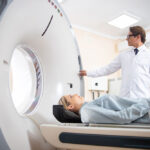
Car accidents are common and can cause a wide variety of injuries that affect people physically and emotionally. By knowing the types of injuries that often result from car accidents, you can better prepare to seek medical care and legal help. This guide provides a detailed overview of car accident injuries and what to do if you experience them.
Common Types of Injuries in Car Accidents
- Soft Tissue InjuriesSoft tissue injuries harm muscles, ligaments, and tendons. Examples include:
- Whiplash: A neck injury caused by the rapid back-and-forth movement of the head.Sprains and strains: Damage to ligaments or tendons in various parts of the body.
- Broken BonesFractures occur in areas like:
- Arms, legs, and ribs.
- Severe cases: Spinal fractures or skull fractures.
- Head and Brain InjuriesThese injuries range from mild to severe, such as:
- Concussions.
- Traumatic brain injuries (TBI).
- Spinal Cord InjuriesSpinal injuries may result in:
- Partial or total paralysis.
- Internal InjuriesCommon internal injuries include:
- Organ damage.
- Internal bleeding.
- Collapsed lungs (pneumothorax).
- Burns and ScarringBurns can result from car fires or contact with hot metal or chemicals.Symptoms: Redness, blistering, or severe tissue damage.Treatment: Skin grafts, surgery, and scar management.Severe burns not only cause physical pain but also emotional distress due to disfigurement. Counseling can be helpful for coping. Organizations that specialize in burn recovery provide resources for both physical and psychological healing.
- Emotional and Psychological InjuriesMany accident victims experience:
- Post-traumatic stress disorder (PTSD).
- Anxiety or depression.
Factors That Affect the Severity of Injuries
Several factors influence the severity of car accident injuries:
- Speed of impact: High-speed crashes result in more severe injuries.
- Type of collision: Side-impact accidents often cause more serious harm compared to rear-end crashes.
- Safety equipment: Seat belts and airbags greatly reduce injury risk.
Modern vehicles include features like lane departure warnings and emergency braking systems, which help prevent accidents or reduce injury severity. The NHTSA encourages using these technologies to improve road safety. Additionally, road conditions, weather, and the use of child safety seats also play crucial roles in reducing injury risks.
Steps to Take After a Car Accident
- Get Medical Attention: Always seek a doctor’s evaluation, even if injuries feel minor at first.
- Document Injuries: Keep records of symptoms, treatments, and expenses.
- Consult a Lawyer: Personal injury attorneys can help you pursue compensation for medical costs and damages.
- Follow Up on Treatment: Adhere to your doctor’s recovery plan, including therapy and medications. Gathering evidence, like photos of the accident scene and witness statements, strengthens your case for legal claims. It’s also essential to act promptly to avoid delays in care or legal action. Understanding your state’s statute of limitations for filing claims is critical to protecting your legal rights.
How to Prevent Injuries in Car Accidents
While not all accidents can be avoided, you can minimize risks by:
- Wearing seat belts: Always buckle up and ensure passengers do the same.
- Avoiding distractions: Focus solely on driving—avoid texting or eating.
- Maintaining your car: Regular inspections, especially of brakes and tires, enhance safety.
Advanced driver-assistance systems (ADAS), such as blind-spot detection and automatic braking, have proven to reduce accident rates significantly. Regular maintenance of safety features ensures they work when needed most. Additionally, following traffic rules and driving defensively can significantly lower the chances of accidents.
Q&A: Frequently Asked Questions About Car Accident Injuries
Q1: What is the most common injury in car accidents?
The most common injuries include soft tissue injuries, such as whiplash, and minor bruises. However, more severe injuries like fractures and concussions are also frequent depending on the nature of the accident.
Q2: Can minor accidents cause serious injuries?
Yes. Even low-speed accidents can lead to injuries like whiplash, concussions, or internal damage, which may not show symptoms immediately.
Q3: How long after a car accident can symptoms appear?
Symptoms can appear immediately or take several days to weeks. For example, whiplash and psychological injuries like PTSD may have delayed onset.
Q4: Do I need a lawyer for minor injuries?
It depends. Consulting a lawyer ensures your medical expenses and other damages are covered, especially if the other party was at fault.
Q5: How can I speed up my recovery?
Follow your doctor’s advice, attend physical therapy sessions, and maintain a healthy diet and exercise routine. Rest and mental health care also play significant roles in recovery.
Conclusion
Car accident injuries can range from minor aches to severe life-changing conditions. Understanding these injuries and taking proactive steps can make recovery smoother and protect your rights. Seeking immediate medical and legal help ensures you have the support needed to recover physically, emotionally, and financially.
Prevention remains the best strategy. By driving cautiously and maintaining your vehicle, you can reduce the risk of accidents. If an accident does occur, prioritize your health and reach out to professionals for guidance. Together, preparation and awareness can help create safer roads for everyone.
If you have been injured in a car accident recently, do not hesitate to contact us, we will help you obtain the care you need and the maximum compensation you deserve.




